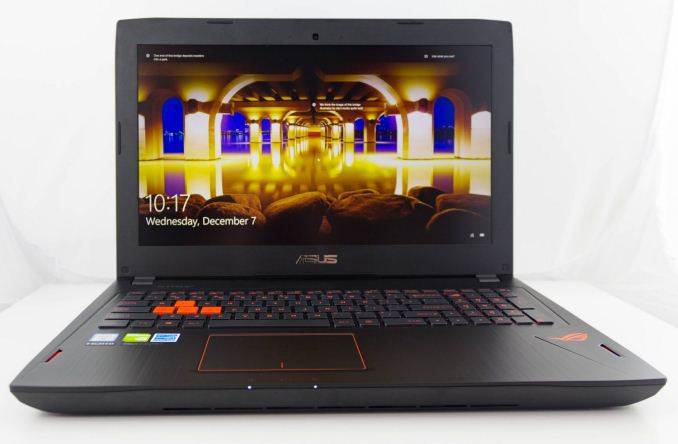ASUS offers a wide assortment of gaming laptops under “Republic of Gamers”, or ‘ROG’, with models such as the G752 lineup, the liquid cooled models in the GX800 series, and a few models for those who need more gaming per dollar. Today we are looking at the ASUS ROG Strix GL502VS, which ASUS labels “Compact and Potent”. The Strix branding has morphed a bit over the years, and now tends to signify the more economical products from ASUS, and the GL502VS certainly fits that bill, with quite a bit of hardware packed into a reasonable budget.
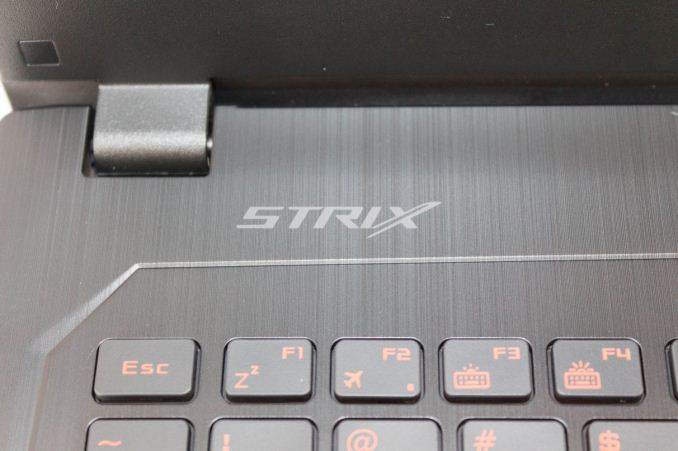
There are a couple of models of the GL502, and the VS version here for review is the top end version, featuring an Intel Core i7-6700HQ, NVIDIA GTX 1070, and up to 32 GB of DDR4. There are both 3840×2160 and 1920×1080 displays available, and both feature NVIDIA G-SYNC for a smoother gaming experience. SSDs are available for the boot drive, up to 512 GB, and ASUS also includes a 1 TB 5400 or 7200 rpm HDD for bulk storage to cope with the size of today’s games.
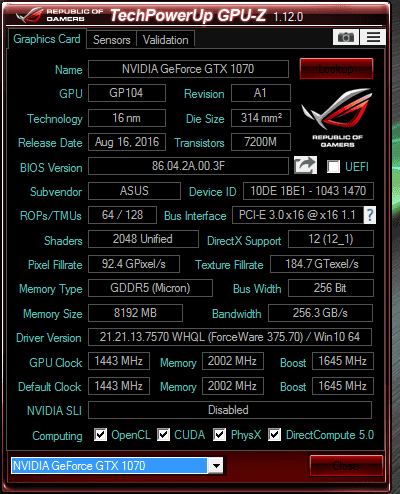
The laptop is fairly compact for a 15.6-inch gaming laptop, with the GL502VS model being 30.1 mm (1.18 inches) thick, and 2.34 kg (5.15 lbs) in weight. But it is not the thinnest or lightest gaming laptop of this size. The lower powered GL502VM model drops the GPU down to a GTX 1060, shaves 7 mm off the height, and 140 grams off the weight.
| ASUS ROG Strix GL502VS | |
| CPU | Intel Core i7-6700HQ, 4C/8T, 2.6-3.5 GHz, 6MB Cache, 45W TDP |
| GPU | NVIDIA GTX 1070 4/8GB 2048 CUDA Cores, 1442 – 1645 (Boost) MHz |
| Memory | 2 SODIMM Slots, 32 GB Max DDR4 |
| Display | 15.6″ 1920×1080 IPS 60 Hz w/G-SYNC Optional 3840×2160 IPS w/G-SYNC |
| Storage | 1 TB 5400/7200rpm HDD Optional 128/256/512GB M.2 SSD, SATA or PCIe |
| I/O | 3 x USB 3.0 Ports 1 x USB 3.1 Gen 2 (Type-C) 1 x HDMI 2.0 output Port (with HDCP) 1 x mini DisplayPort 1.3 output Ports SD Card Slot 1 x Headset Jack 1 x Realtek PCIe GbE RJ-45 LAN (10/100/1000Mbps) |
| Dimensions | 390 x 266 x 30 mm 15.35 x 10.47 x 1.18 inches |
| Weight | 2.34 kg / 5.16 lbs |
| Battery | 62 Wh, 180W AC Adapter |
| Wireless | Intel Dual Band Wireless-AC8260 2×2:2 with Bluetooth 4.1 |
| Price | $1650+
As Tested: 6700K, 16GB (1×16) DDR4-2400 , |
Although I’m not a huge fan of ASUS’s laptop naming schemes, I am a fan of them putting in the latest and greatest technology into their devices. They were very quick out of the gate to transition to SSDs, PCIe SSDs, and USB-C, and that’s the case here as well. The GL502VS features an NVMe Samsung drive, along with a USB 3.1 Gen 2 Type-C port, but they’ve also kept plenty of older I/O as well, including three USB 3.0 ports, mini Display Port, HDMI, RJ45, and a SD card reader.
Wireless is supplied by the Intel Dual Band Wireless-AC 8260 card, which has been a strong performer on all laptops this year. The 62 Wh battery is certainly on the small size for a gaming notebook, but as with most gaming notebooks, they are mostly designed to be plugged into the wall for almost all scenarios, with a battery for the odd time where you need to be a bit more mobile.
The GL502 lineup is quite a bit of performance for not a lot of money, with the GTX 1060 based GL502VM starting around $1300, and the higher performance GTX 1070 based GL502VS starting around $1600.
Without putting too fine a point on it, ASUS can design some stunning notebooks, but this is not one of them. Stepping down to their value line keeps the same powerful internals, but to hit this price point ASUS has taken some liberties with the chassis design. The entire notebook is built from a fairly low quality plastic, with the exception of the lid which has a metal top. The top has a brushed finish with lines running parallel down the entire device, which looks nice, but that’s where the premium materials end.
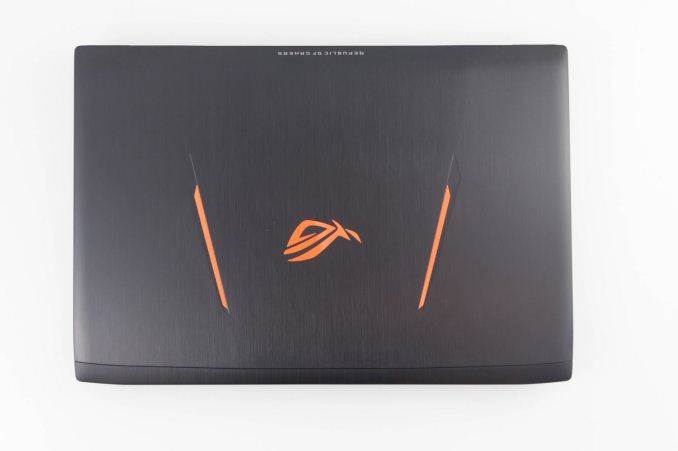
Opening the notebook, the same brushed finish is replicated on the plastic keyboard deck, but this time on the plastic finish. The keyboard itself features 1.6 mm of travel with red backlighting, but the keyboard feel lacks the nice feel of some of the other ASUS notebooks. The WASD keys are red with black fonts, compared to the rest of the keys which are black with red fonts, and although the look won’t appeal to everyone, it does help quickly identify the most needed keys for gaming. ASUS continues its silly tradition of having the power key right in the keyboard, with it at the top right. If you accidently go to press the minus key, you may end up shutting off the laptop. There’s no good reason for them to put it there, although at least on this notebook, with its extra number pad, it is less likely to get hit than on one of their smaller notebooks where it is right beside the delete key. This seems like a small gripe, but shutting off your computer when going to hit a key is not a great experience.
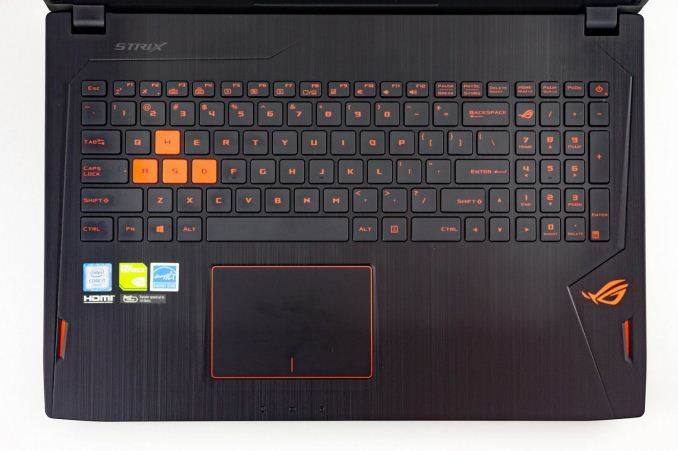
The trackpad on this notebook does feature the Microsoft Precision Touchpad drivers, for better or for worse, and it’s nice to see Microsoft reigning this in. They still have some work to do with the drivers, but at least it is a consistent experience across devices now. That being said, the trackpad on this notebook is not quite as smooth as some other notebooks, and picks up fingerprints quite readily. It would be nice to see a glass trackpad, although once again the budget comes into play. Luckily a good mouse is going to be required for gaming regardless, so this isn’t as big of an issue as it is on a more portable device.


Being a large gaming laptop, there is expandability with the GL502VS, and just a couple of screws will let you pop off the bottom and access the memory, which has two SODIMM slots, the M.2 SSD, and the SATA drive. Maximum memory is 32 GB through two 16 GB DDR4 modules. On our 16GB sample, only one memory slot was occupied for single channel memory performance.
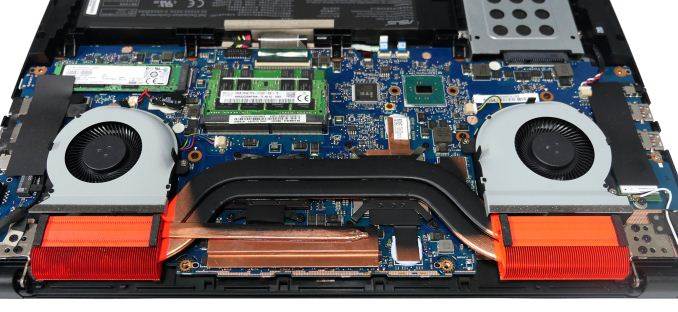
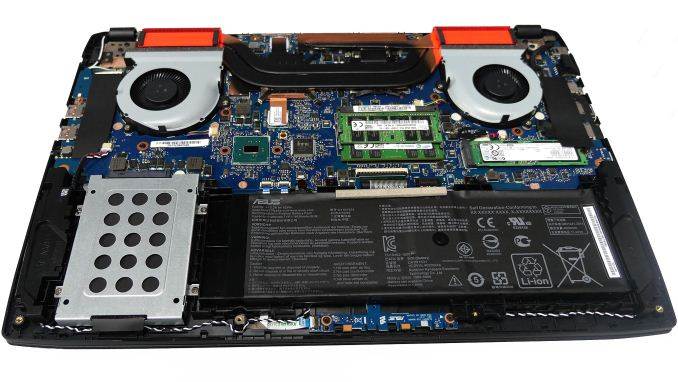
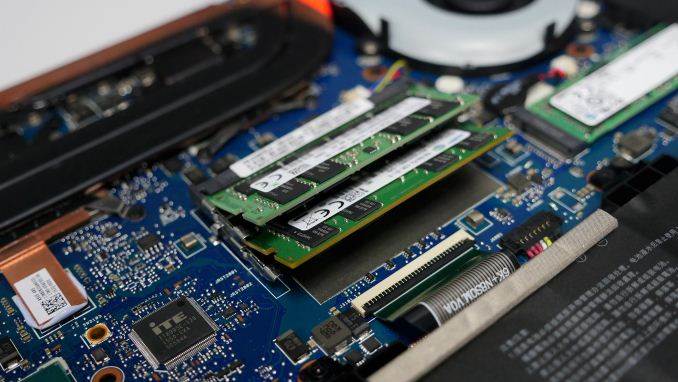
Interior photos courtesy of rog.asus.com
Overall the design of the ASUS GL502VS is kind of disappointing. The top of the notebook is a very nice looking metal, but the remainder of the notebook is a fairly low grade plastic. ASUS does build some nice notebooks, but to hit their budget on this one with the components on the inside, clearly some cost cutting was necessary. They have also gone a bit overboard with the red accents on this notebook, and especially with the bright shade of red chosen, although the almost orange WASD keys do look nice and red with the keyboard backlighting on.
At this point the Skylake mobile quad-core parts are pretty well known. The review unit is outfitted with the Intel Core i7-6700HQ, which is a 45-watt 2.6-3.5 GHz CPU. It has been the staple of almost all quad-core notebooks this year. Also the review unit is outfitted with just a single stick of 16 GB DDR4-2133 memory, which will hamper performance a bit over a dual-channel setup in some of the more varied tests such as PCMark. It’s not quite as critical though on a notebook with a dedicated GPU, but still it would be nice to see 2×8 GB rather than 1×16 GB, unless you wanted to upgrade, in which case the single 16 GB is likely the better choice.
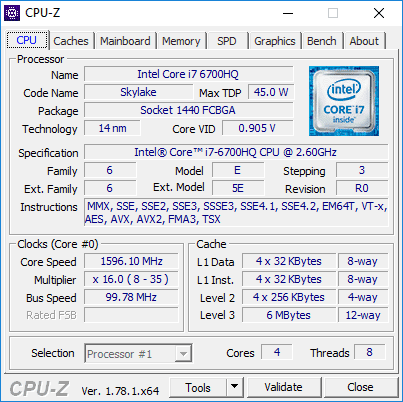
The ASUS GL502VS was put through our standard notebook workflow, which includes a variety of tests to stress different aspects of the device. Several other similar models are used as a comparison, but if anyone wants to compare the GL502VS to any other notebook we’ve tested, please use our online bench.
PCMark
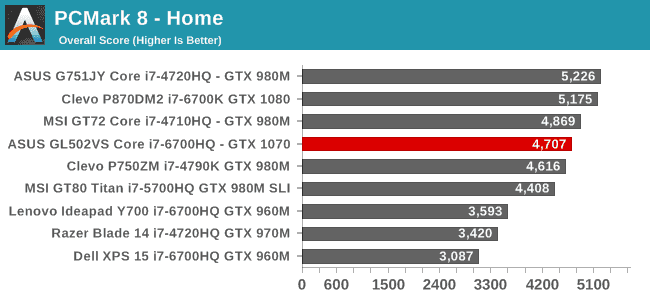
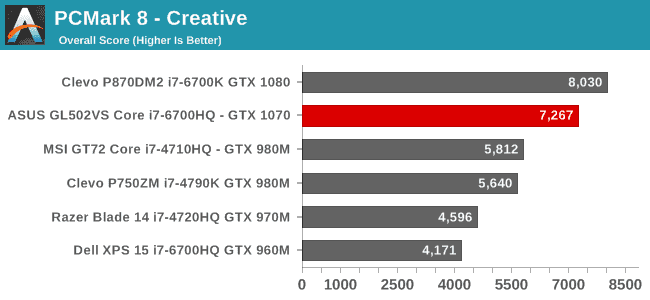
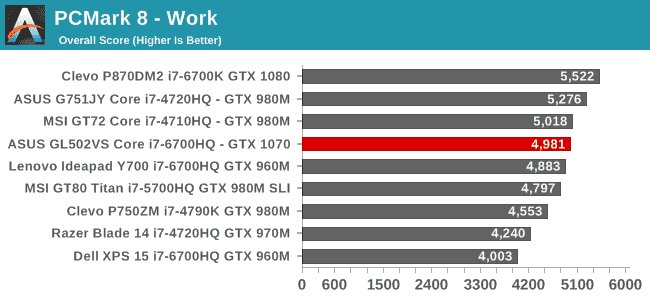
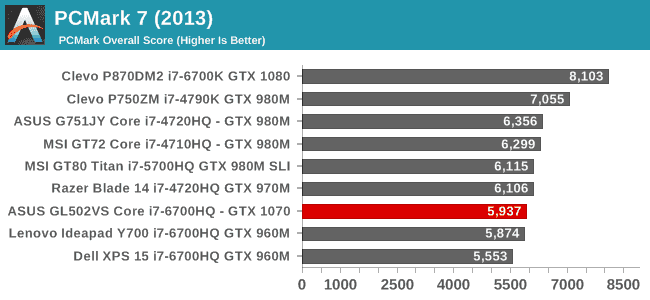
PCMark from FutureMark is a comprehensive system test, which runs through a variety of workloads based on the test chosen. All aspects of the machine impact the final results, including GPU, CPU, memory, drive speed, and even display resolution. The ASUS scores very well here, despite single channel memory performance. The Creative score is quite strong thanks to the much more powerful GPU than previous generation notebooks.
Cinebench
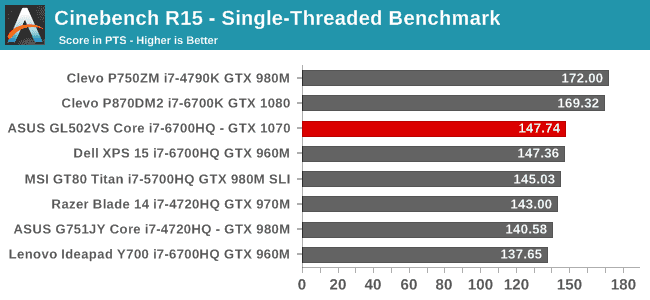
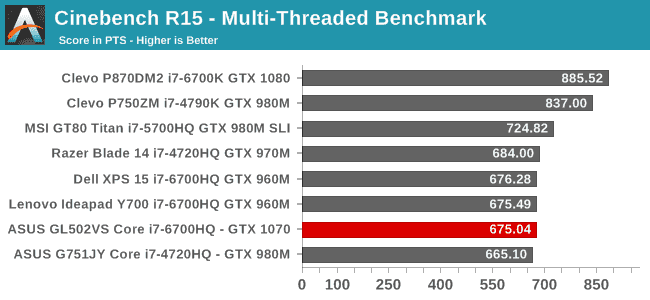
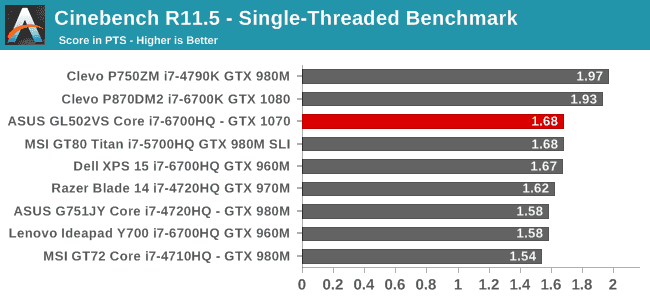

Cinebench is a rendering program which is a pure CPU test. More cores and a higher frequency can pay big dividends on this test. The i7-6700HQ is right in line with other devices with the same CPU.
x264
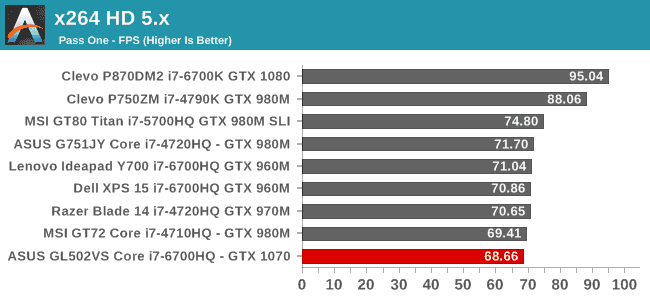
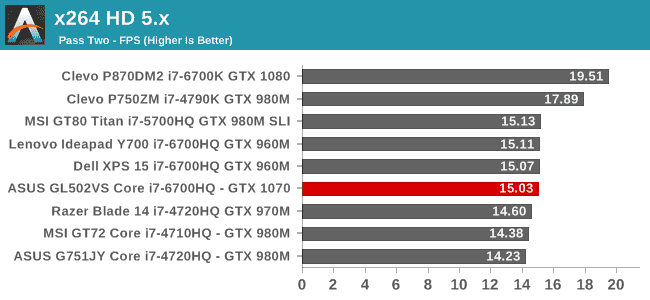
Like Cinebench, this test is mostly a CPU bound test, and once again, the ASUS falls in-line with the other quad-core notebooks featuring this CPU. The desktop class CPUs in the Clevo notebooks have a large advantage on these tests.
Web Tests
The browser is likely the most used application on any computer, and as such browser performance is always important. We’ve moved to Microsoft Edge as the browser with the release of Windows 10, and like Google Chrome and other browsers, the performance of the scripting engine generally improves over time. Each browser performs better on some tasks than others, so these tests have the browser used on each unit pointed out in the results.
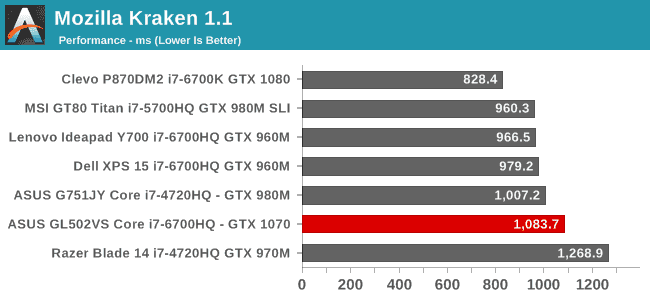
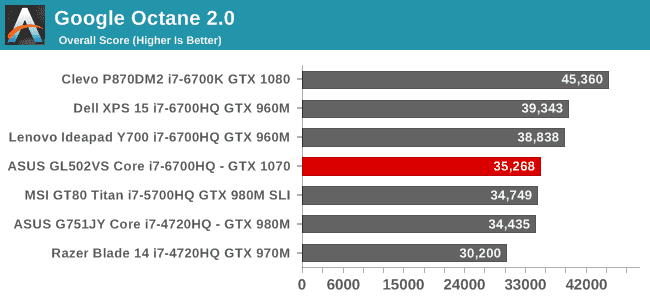
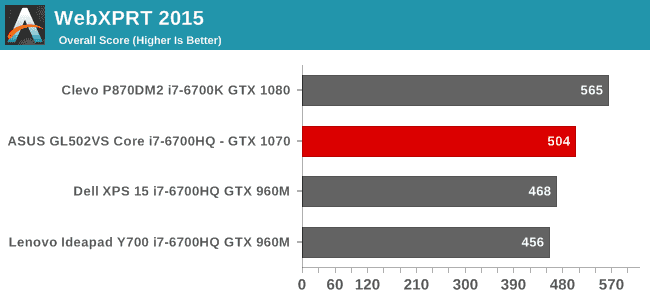
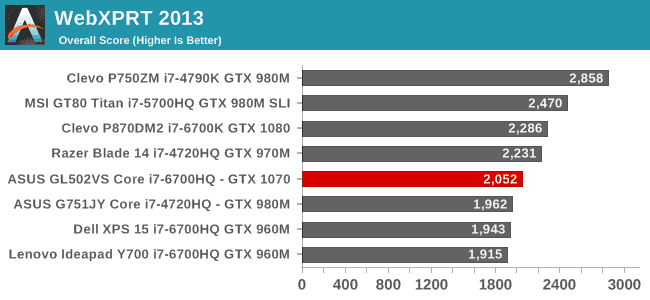
The i7-6700HQ continues to be a strong performer in these tests. The desktop i7-6700K in the Clevo P870DM2 is much quicker, but it’s also a 95-Watt CPU.
There has been a big push the PCIe based storage over the last twelve months, and ASUS has definitely been at the forefront of that movement. But as we know, not all NVMe drives are the same. NAND capacity is always a factor, and of course TLC or MLC can be a big impact, especially on write speeds where TLC struggles. The ASUS review unit shipped with the Samsung SM951 SSD, which is (unusually for this level of device) an MLC drive. This was already hinted at earlier, but ASUS saved some money on the design of this notebook, but they continue to pack in quality hardware inside, and the use of the SM951 has to be commended since it’s unfortunately very rare to see over the TLC based PM951.
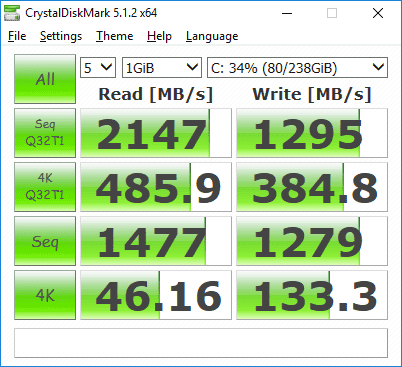
Being just the 256 GB version, the fewer NAND dies compared to the larger capacity models is really the only issue with performance, but it performs…
